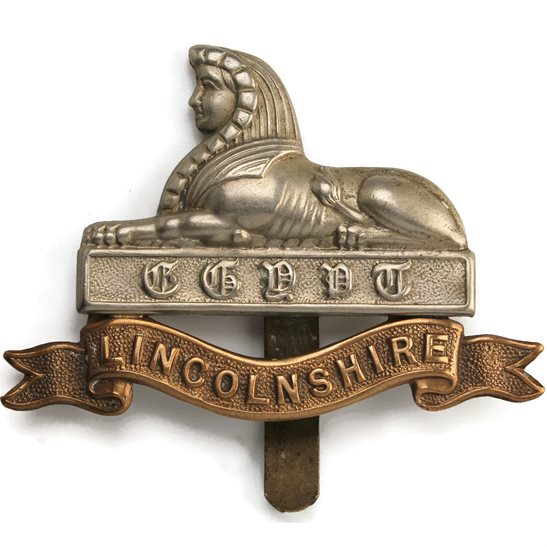Cap Badge of the Lincolnshire Regiment
George Eade, born on 24th February 1899, was only fifteen when war was declared and therefore too young to enlist. By the time he had reached eighteen in 1917, conscription had been introduced. George joined the Suffolk Regiment for training and when he was posted to France, he was due to join the 2nd Battalion, Suffolk Regiment, but shortly after landing he was transferred to the 2nd Battalion, Lincolnshire Regiment instead.
The battalion was based at Dominion Camp near Poperinghe in Flanders. On 31st July 1917, they were involved in the Battle of Pilkem Ridge, the first action of the Third Battle of Ypres or Passchendaele. On that day, the battalion war diary reported:
“9.00 am: By this time the battalion had arrived at the deployment position and all companies reported casualties from Machine Gun fire whilst in Chateau Wood and from shell fire between there and Westhoek. The carrying platoon were exhausted from the effects of gas shells and the heavy ground.”
The diary also records that at the start of the battle, the battalion was twenty officers and around six hundred men strong. By the end of the action they had suffered over two hundred and fifty casualties; ten officers and two hundred and forty-three other ranks. It is probable that George was one of the “carrying platoon”, bringing munitions and equipment to the jumping-off point for the rest of the battalion. He was one of those affected by the gas shells.
News of his injury reached his parents and, on 30th August 1917, a report appeared in the Woodbridge Reporter and Wickham Market Gazette that stated:
“Private G Eade of the Lincolnshire Regiment, son of Mr and Mrs T Eade of Foundry Cottages Melton, is in hospital in Cardiff suffering from poison gas, which has burnt him slightly all over, and affected his throat and eyes. He has seen much fighting, and on a date in July when he went into action 800 strong, only 150 were left unscathed.”
After he had recovered sufficiently, he joined the 10th (Service) Battalion, Lincolnshire Regiment, with whom he remained until the end of the war. For his war service, George received the British War and Victory Medals.
In 1919, George married Elsie May Thomas in Aberdare, Glamorganshire. It is likely that George met Elsie while he was being treated for his wartime injury. In 1939, the family were living at 12 Albert Street, Aberdare. George’s sister Gertrude and her son lived with them, having been evacuated due to the start of the Second World War, leaving her husband Alfred in Willesden, London.
